Mornings can be tough. Your body feels stiff, your mind groggy, and the temptation to stay in bed is strong. But what if just five minutes of stretching could completely transform the way you start your day?
Forget the coffee or endless scrolling—stretching is the ultimate wake-up call for your body. All it takes is five minutes of intentional movement to wake up your body and start your day right.
Stay tuned for the 8 best stretches to help you feel more flexible, focused, and full of energy every morning.
Why Morning Stretches Matter
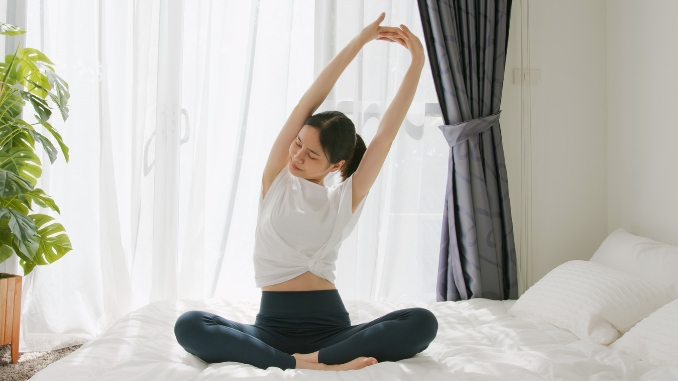
After a night of stillness, your muscles and joints need a gentle reset.
According to L’Oreal Thompson Payton, says stretching in the morning, whether it’s done intentionally or not, it helps increase blood flow and oxygen to our muscles, allowing us to ‘wake’ the body up.
But, morning stretches aren’t just about feeling limber—they’re the key to starting your day with energy and focus. Here’s why:
- Boost Energy: Stretching improves blood flow, delivering oxygen and nutrients to your muscles, giving you a natural energy boost.
- Improve Flexibility: Loosen tight muscles and enhance your range of motion to move more freely throughout the day.
- Set a Positive Tone: A quick stretch clears your mind and sets you up for a productive and focused day.
Think of it as pressing a reset button for both your body and mind. It’s a simple habit that can make a big difference in how you feel and perform all day long.
The Science Behind Morning Stretches
1. Improved Blood Circulation
When you stretch, you increase blood flow throughout your body. This enhanced circulation delivers vital oxygen and nutrients to your muscles, tissues, and brain.
Better blood flow means improved alertness, reduced muscle soreness, and a more energized feeling to kickstart your day. According to a Harvard study [1], regular stretching not only boosts immediate circulation but also contributes to long-term cardiovascular health.
It’s a quick and natural way to wake up your entire system without relying on caffeine.
2. Loosening Stiff Muscles After Sleep
After a night of lying still, your muscles and joints can feel tight and immobile. Stretching helps to lengthen these stiff muscles and improves the range of motion in your joints especially through long periods of inactivity.
Another Harvard healthline study [2] supports this, stating that stretching can actually help alleviate morning stiffness caused by long periods of inactivity, such as sleeping.
This process helps you avoid that sluggish, groggy feeling in the morning and prepares your body for the day ahead, whether it’s walking, working, or even just sitting comfortably.
3. Boosting Endorphins for an Energized Start
Stretching isn’t just about physical benefits—it has mental perks too. Stretching releases endorphins, your body’s natural “feel-good” hormones.
These chemicals improve your mood, reduce stress, and leave you feeling more alert and positive as you start your day. In fact, according to a study by the American Psychological Association [3], engaging in regular physical activity, including stretching, can improve one’s mental health by boosting endorphins.
8 Morning Stretches to Wake Up Your Body
1. Shoulder Rolls
- Begin in an upright standing position with your feet hip-width apart, maintaining a good alignment with your head, shoulders, hips, and legs.
- Relax your arms at your sides and engage your core.
- Lift your shoulders, then roll them back until you feel resistance in your shoulder blades.
- Lower your shoulders to the starting position and repeat the movement.
- Relax, then repeat the movement in the opposite direction.
- Complete the movement for 5 repetitions for each motion.
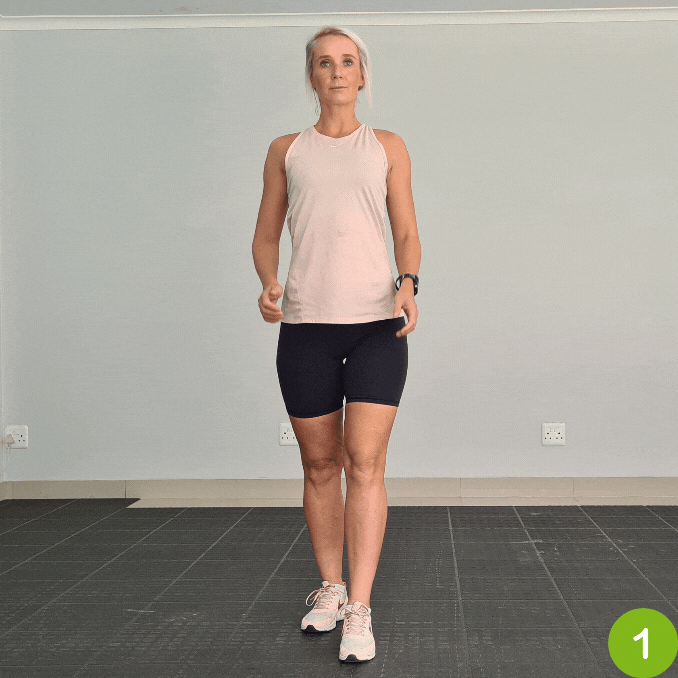
2. Cat-Cow Stretch
- Begin in a 4-point position with your hands beneath your shoulders and your knees under your hips.
- Contract your abdominal area.
- Slowly round your mid back as you lower your head towards your chest.
- Then, alternate by lifting your head and arching your mid back.
- Repeat the sequence of movements. Complete 5 repetitions.
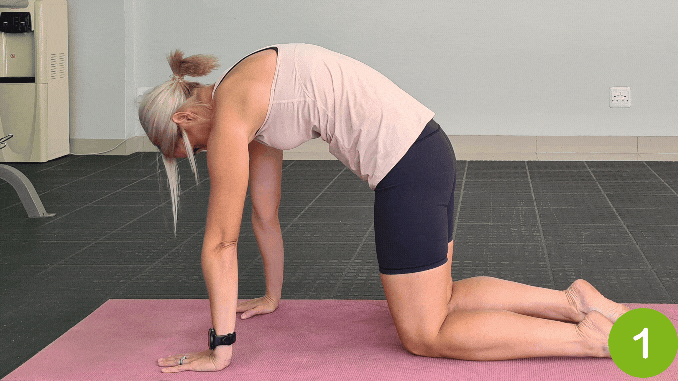
3. Forward Fold
- Begin in an upright standing position with your feet hip-width apart, maintaining a good alignment with your head, shoulders, hips, and legs.
- Tighten your core and hinge through your hips to bend your upper body forward.
- Slowly lower your head and arms to reach for your toes while keeping your legs straight.
- Hold this position for several deep belly breaths, in through your nose and out through your mouth.
- Repeat the movement for 2 – 5 repetitions.
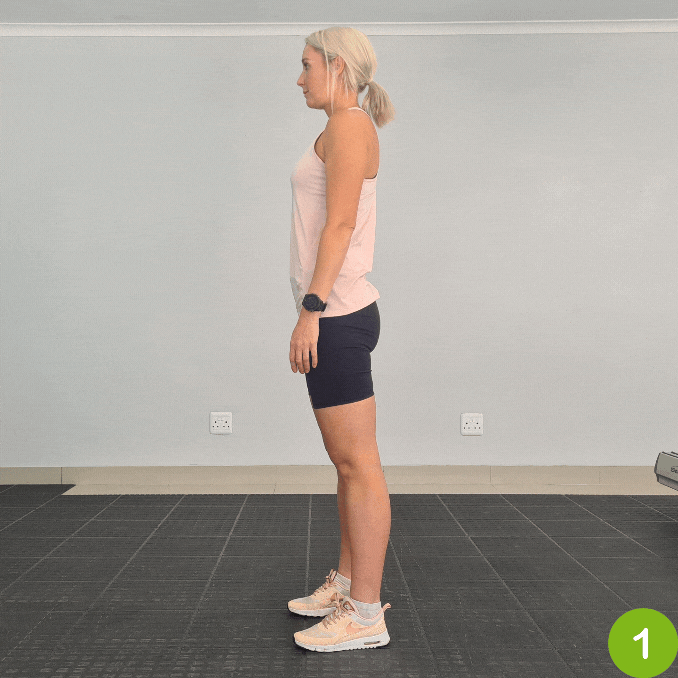
4. Child’s Pose
- Begin in an upright kneeling position on the floor with your knees wider than shoulder-width apart, maintaining a good alignment with your head, shoulders, and hips.
- Tighten your abdominal area.
- Shift your hips back to your feet and extend your arms in front.
- Drop your forehead on the floor, relaxing your mid-back area for a light stretch.
- Take a couple of deep belly breaths in through your nose and out through your mouth.
- Hold this position for several deep belly breaths, in through your nose and out through your mouth.
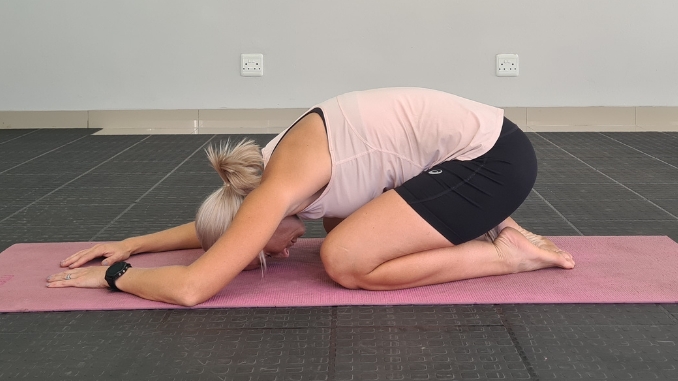
5. Downward Dog
- Begin in an upright kneeling position on the floor with your knees wider than shoulder-width apart, maintaining a good alignment with your head, shoulders, and hips.
- Tighten your abdominal muscles and push back with your arms straightening your legs as you lift your hips.
- Take several deep belly breaths through your nose and out through your mouth.
- Lastly, relax and return to the starting position.
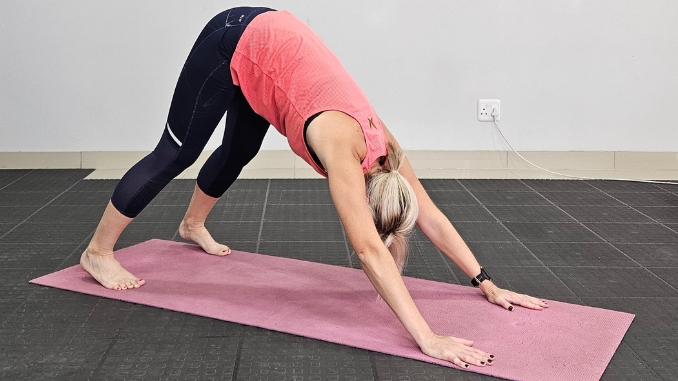
6. Squats
- Begin in an upright standing position with your feet shoulder-width apart, maintaining good alignment with your head, shoulders, hips, and legs.
- Place your hands on your hips and engage your core.
- Bend your knees and then hinge through your hips to move into a squat position, keeping your knees behind your toes.
- Raise back up to an upright standing position, squeezing your glutes at the top position.
- Repeat the movement for 10 repetitions.
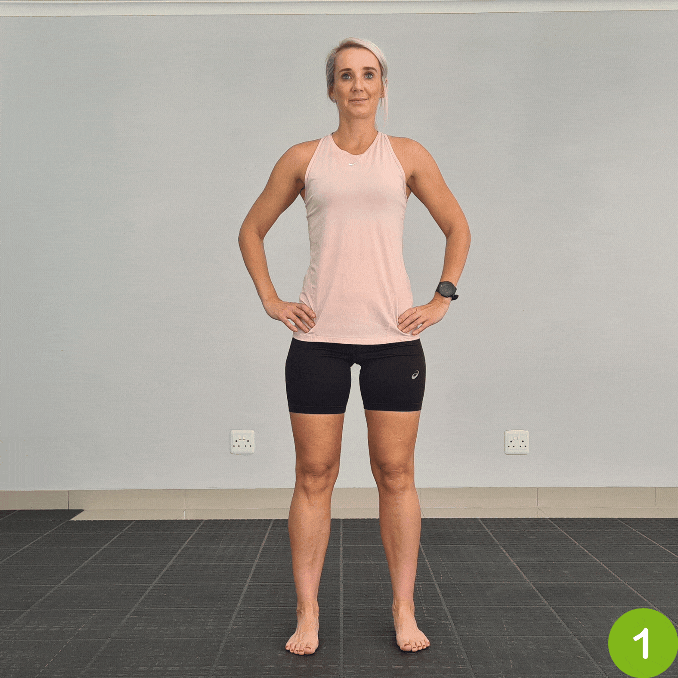
7. Side Stretch
- Begin in an upright sitting position on a chair with your knees bent and feet flat on the floor.
- Maintain good alignment with your head, shoulders, and hips.
- Extend your left leg out to the side.
- Engage your core and raise your right arm overhead and slowly bend your upper body to the left side, as you place your left hand on your left leg for support.
- Hold the position for a couple of seconds.
- Relax and repeat the movement on the opposite side.
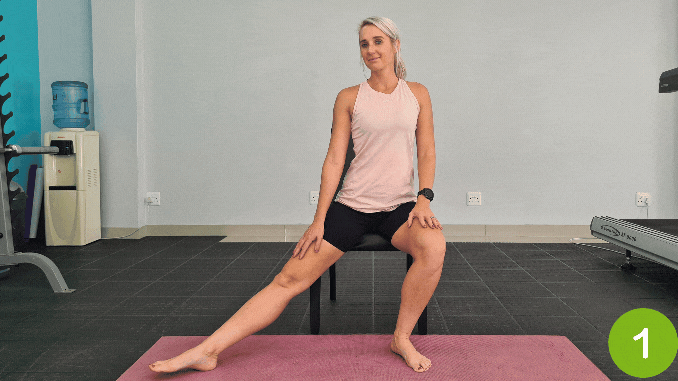
8. Overhead Stretch
- For this morning stretches, begin in an upright standing position with your feet shoulder-width apart, maintaining good alignment with your head, shoulders, hips, and legs.
- Extend one arm overhead, reaching over the opposite shoulder.
- Hold this position for a few seconds before returning to the starting position.
- Repeat the movement on the opposite side.
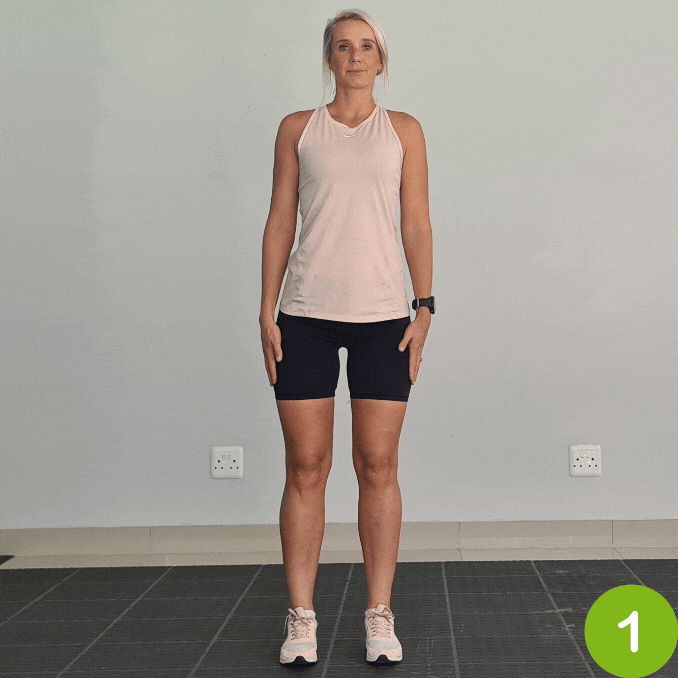
Tips for Making Morning Stretching a Habit
Building a morning stretching habit is easier than you think. Here’s how to make it stick:
- Start Small – Begin with just 2–3 minutes of stretching each morning. As it becomes part of your routine, gradually increase the time.
- Pair It With Another Habit – Combine stretching with something you already do, like brushing your teeth, brewing coffee, or listening to a podcast. This makes it easier to remember.
- Keep It Comfortable – Use a yoga mat or towel to make stretching more enjoyable. Set up a space in your bedroom or living room where you can stretch without distractions.
- Stay Motivated – Set reminders, leave your mat visible, or track your progress on a calendar. Seeing your consistency can motivate you to keep going.
- Focus on the Benefits – Notice how stretching makes you feel—less stiff, more energized, and ready to take on the day. The more you enjoy the results, the more likely you’ll stick with it.
With these simple tips, stretching will soon become a natural and energizing part of your mornings.
Benefits of Stretching Beyond Waking Up
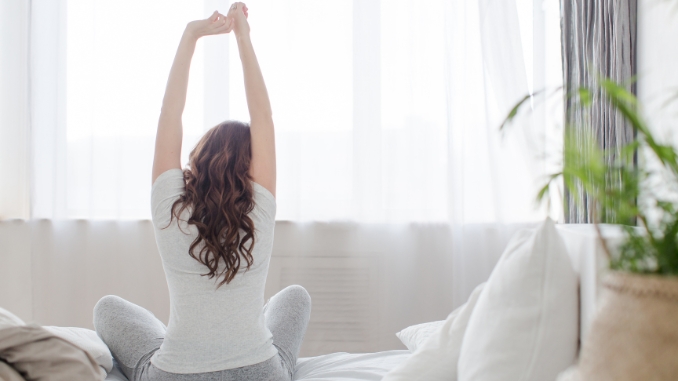
Morning stretches are great for waking up your body, but their benefits go far beyond that. Regular stretching can have lasting effects on your overall health and well-being. Here’s how
1. Improved Posture
Sitting for long periods or sleeping in awkward positions can lead to poor posture and muscle imbalances. Stretching helps lengthen tight muscles, particularly in your neck, shoulders, and back, which are often the most affected. Over time, better posture reduces strain on your spine and helps you stand taller with confidence.
2. Reduced Risk of Injury
When your muscles are flexible and your joints move smoothly, your body is less prone to injuries. Stretching improves your range of motion and keeps muscles from becoming too tight or overworked. This is especially helpful for preventing common issues like lower back pain or pulled muscles during physical activities.
3. Better Mood and Less Stress
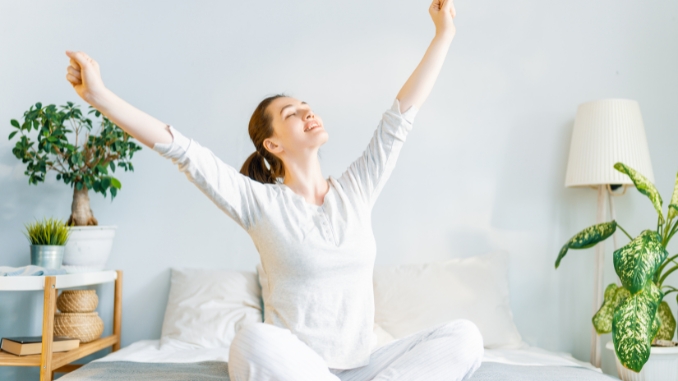
Stretching isn’t just physical—it’s also mental. It increases blood flow, which delivers oxygen to your brain and boosts the release of endorphins, your body’s natural mood elevators. Stretching also promotes relaxation by reducing tension in your muscles, helping you feel calmer and more centered.
4. Enhanced Physical Performance
If you’re active, stretching can prepare your body for exercise by warming up your muscles and improving flexibility. This leads to better performance and quicker recovery after workouts. Even for non-athletes, improved flexibility helps with daily movements, like bending, reaching, or walking.
Conclusion
Morning stretching is a simple yet powerful habit that can transform how you start your day. Just a few minutes of intentional movement can boost your energy, improve flexibility, and set a positive tone for the hours ahead.
From loosening stiff muscles to enhancing your mood, the benefits go beyond waking up your body—they improve your overall well-being. Start small, stay consistent, and focus on how great it makes you feel.
Whether you’re targeting better posture, reducing stress, or simply wanting a fresh start, these stretches are the perfect way to energize your mornings and improve your life.
Make stretching a part of your daily routine and feel the difference for yourself!
Frequently Asked Questions
How long should I stretch in the morning?
A quick routine can take as little as 5 minutes, but aim for 10–15 minutes if you want to target more muscle groups. Even a few minutes of stretching is better than none, so start small and increase the time as it becomes a habit.
Do I need to warm up before stretching?
For gentle morning stretches, a warm-up isn’t necessary because your body hasn’t been exerting itself yet. However, if you plan to do dynamic stretches or a more intense workout, some light movement like marching in place can help prepare your muscles.
Can I do these stretches in bed?
Yes, many stretches can be modified to do in bed! Moves like the seated forward fold, spinal twist, or knee-to-chest stretch are perfect for loosening up before you even set foot on the floor.
What time in the morning is best for stretching?
There’s no “perfect” time—it depends on your schedule and preferences. Whether it’s right after waking up, after your shower, or before breakfast, the best time is when you’re most likely to stay consistent.
References
1. Publishing, H. H. (2019, June 21). Exercise and your arteries. Harvard Health. https://www.health.harvard.edu/heart-health/exercise-and-your-arteries
2. Solan, M. (2020, December 8). Stiff and achy in the mornings? How to fix that. Harvard Health. https://www.health.harvard.edu/blog/stiff-and-achy-in-the-mornings-how-to-fix-that-2020120821565
3. American Psychological Association. (2020, March 4). Working out boosts brain health. American Psychological Association. https://www.apa.org/topics/exercise-fitness/stress

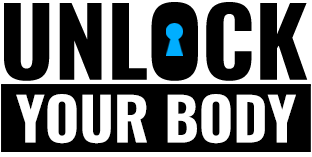
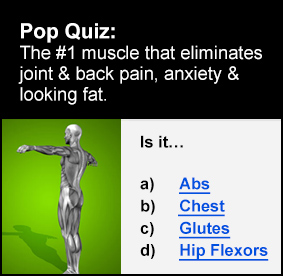
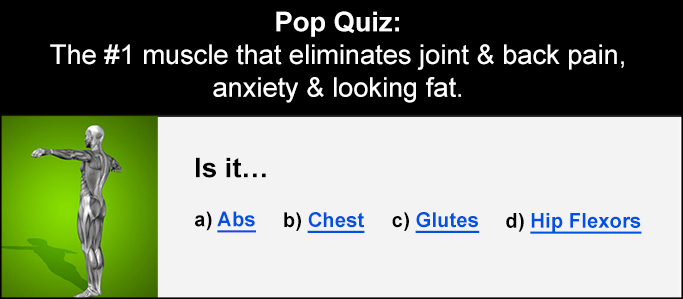
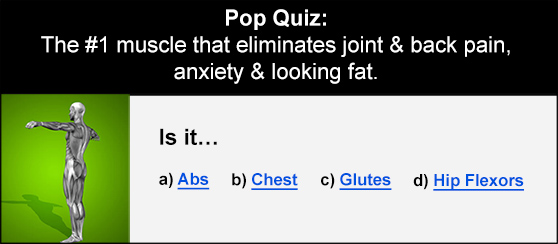
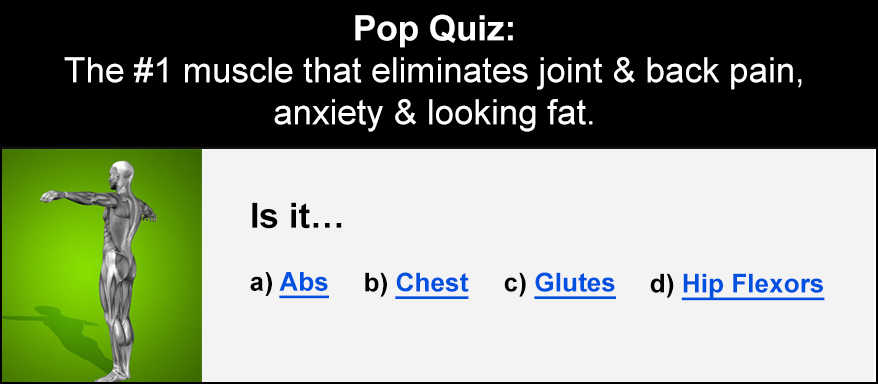


February 17, 2025
I have been looking for a stretching program. Now if I can get started and continue stretching.
Thank you for posting these.